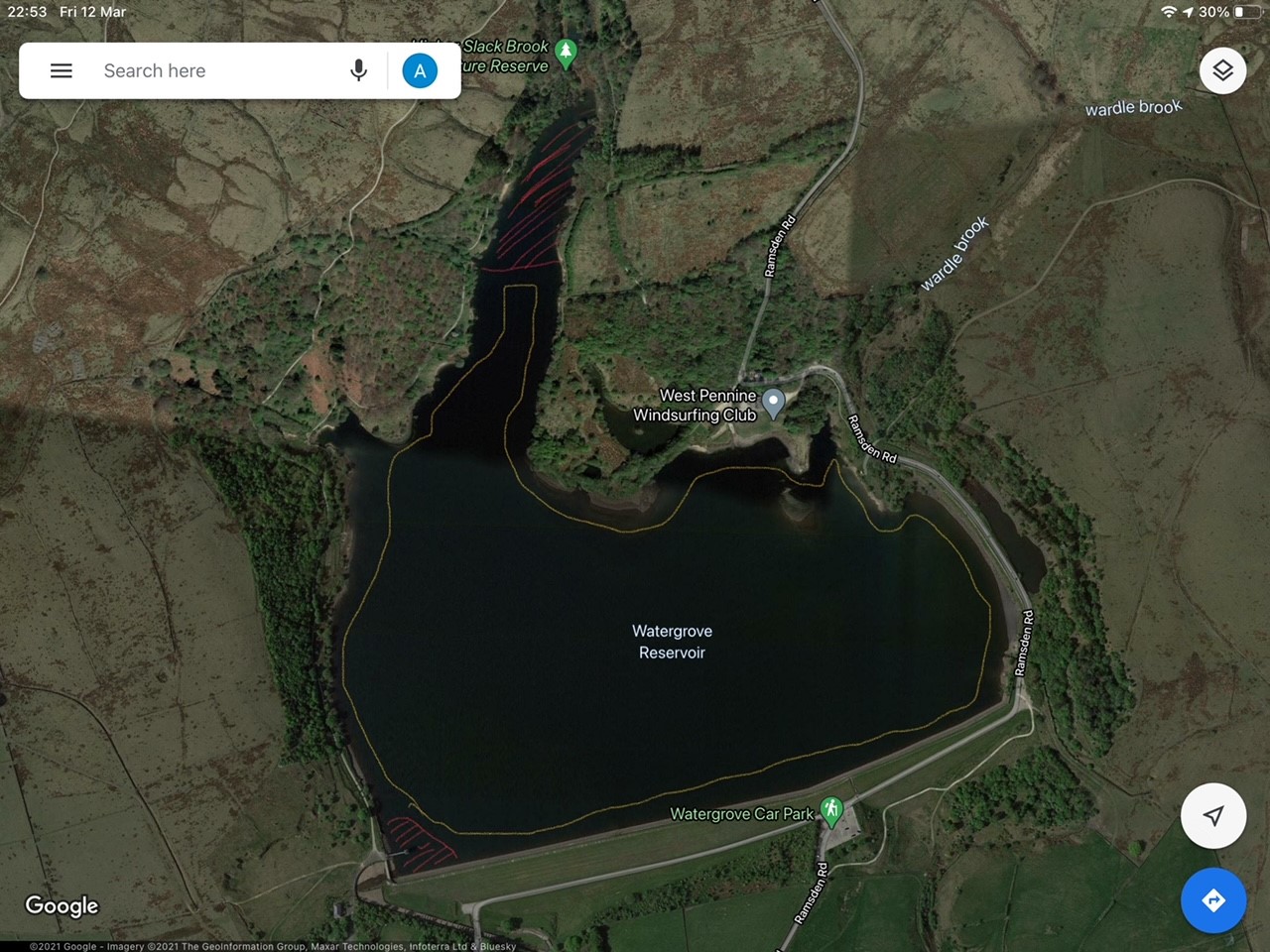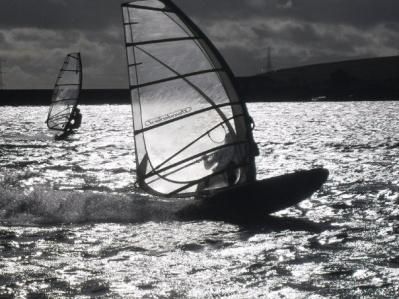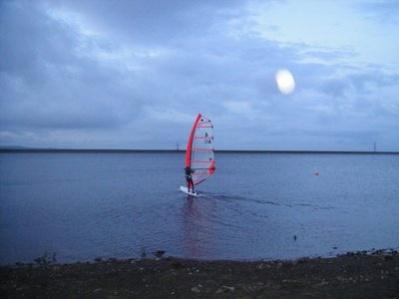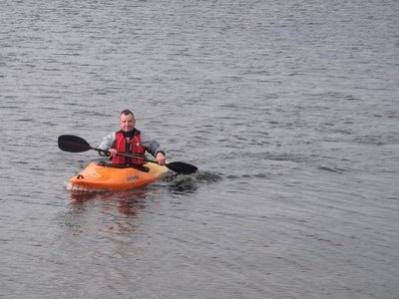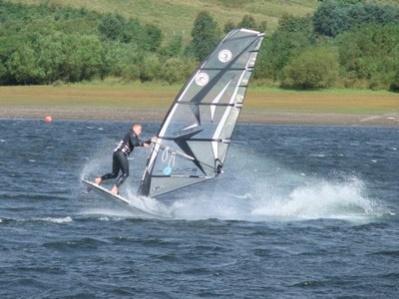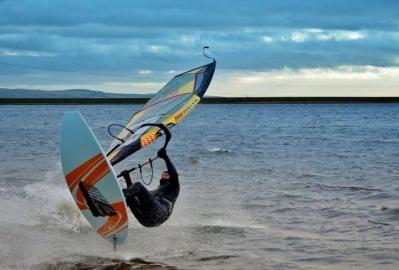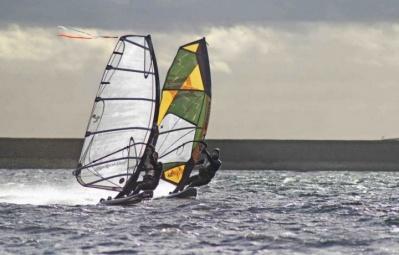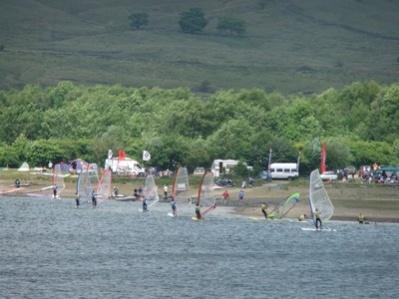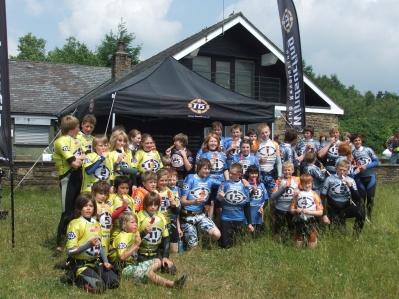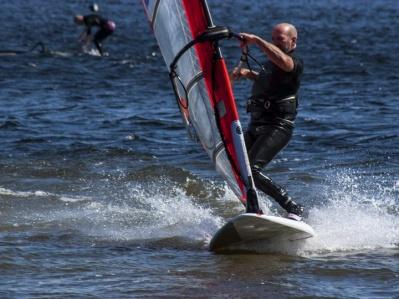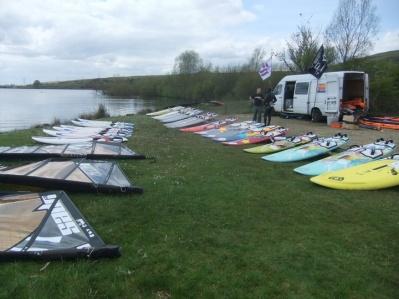Canoeing & Kayaking
Angela Ward can be contacted for advice on canoeing at Watergrove reservoir. Angela is a keen amateur and may also be able to accompany you from time to time if you wish. As she knows a few canoe manufacturers, paddle makers and coaches she could be exactly the contact you want! And if you're looking for some inspiration, take a look at this 6 minute video Angela shot at the club of her Paddle Coach, Adam Evans, demonstrating a very wide range of strokes.
Some photos of Canoe Coach Adam Evans can be seen here from Summer 2020. And to whet your appetite ....
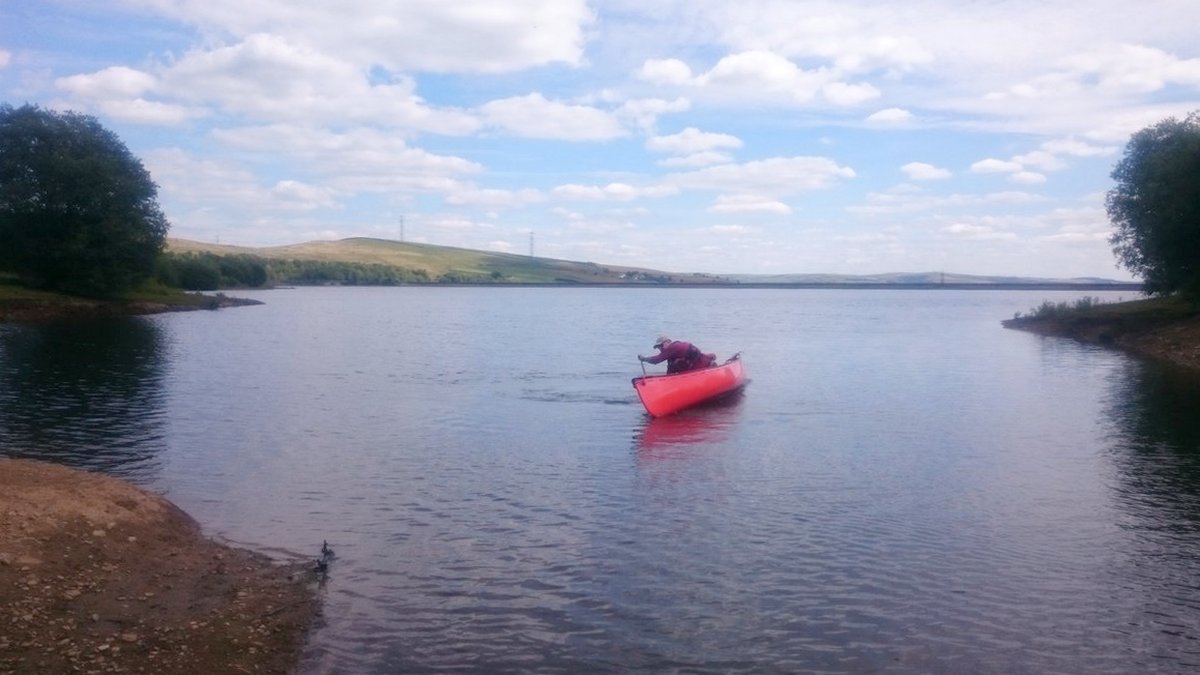
West Pennine Windsurfing Club encourages canoeing/kayaking and paddleboarding, especially on days when there isn't enough wind to windsurf and the club would otherwise be under-used. You are welcome to visit for the day, or join for the year, to canoe or kayak. Be aware please, it may not always be possible to visit in light winds, as most of our members are still windsurfers and won't often be there at such times to let you in. However, if/when you join you will get a key and can then come up anytime you wish in daylight hours. And of course, as we get more SUP and canoe members, this will help access for future visitors to pursue these activities too.
When planning to visit, please text the Chairman or other contact (see Contact Us page) to get the code for the combination lock on the gate at the bottom car park by the dam. We change this code regularly. You should also look at the Booking System or Shoutbox on our website to make sure other people will be present on that day. You can visit for the day, but you'll need £2M third party insurance cover (probably included if you have household insurance but please check) and you'll be asked to pay £15 for a day ticket. You can get up to 3 of these in a year and then you would need to join. We deduct any day tickets purchased in a year if someone subsequently becomes a club member - £135 for an individual and £195 for a family in 2025. Under 16s join for free, but a parent must be at least a social member, which is £38. Please contact Darren, our Membership Secretary, with any membership enquiries. We have a handful of storage spaces currently available if you decide to store your kit at the club - £55/year. Please bring some bottled water, as you shouldn't drink water from taps in the clubhouse at present.
You may find the weather links on our website useful when planning a visit. Xcweather will show you the predicted wind speed every few hours for the next few days and you may prefer it when the wind is less than about 12mph. We have a webcam and an anemometer mounted on the clubhouse to show you the actual conditions. There's a Met Office link on our homepage too.
Some useful links:
British Canoe Union
British Canoeing
Please don't paddle too near the stone valve tower in the SW coner of the reservoir (bottom left in the screenshot below). Also, don't go too far up the channel in the NW corner, which is a Nature Reserve - a member who paddleboards recommends turning back when you reach a sign saying 'No fishing beyond this point. He's shaded both areas on the screenshot below and marked the 1.5 mile perimeter route he paddles with his partner.
